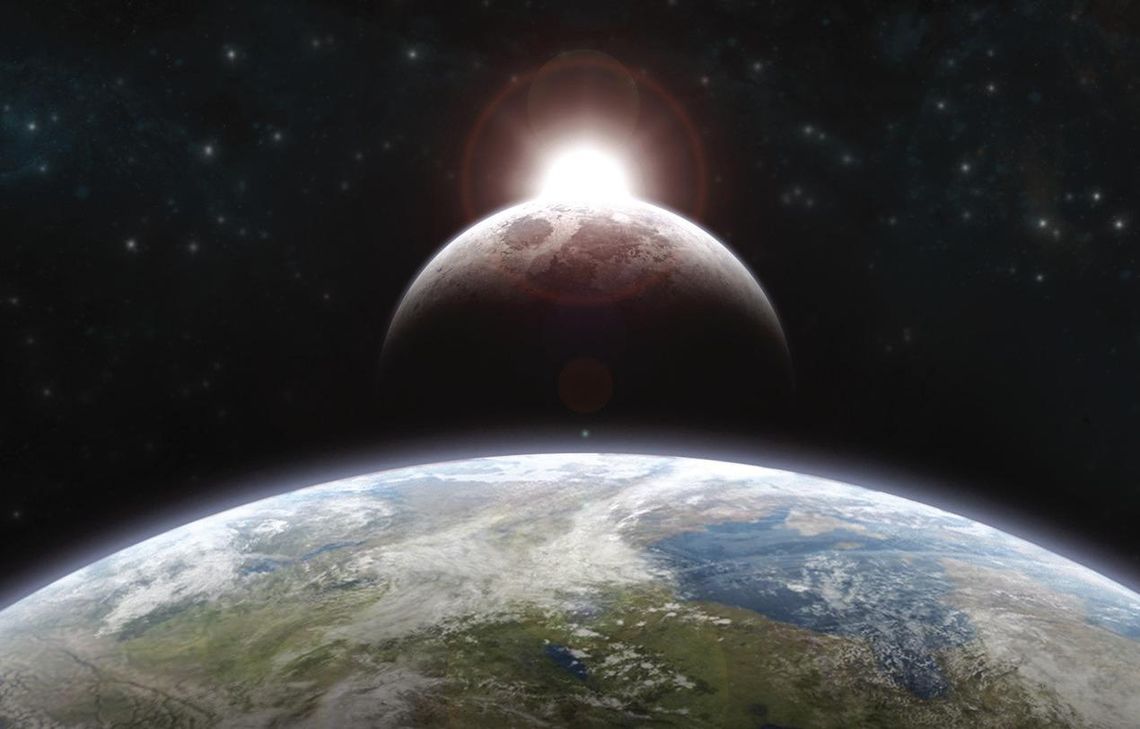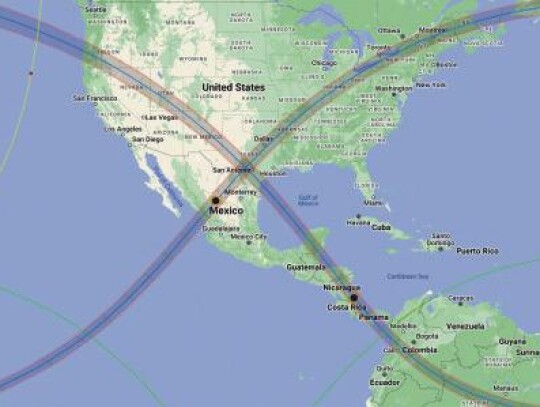This year, those of us in the Hill Country will have the rare opportunity to view not one but two solar eclipses. First up is an annular eclipse on Oct. 14 that will travel from Oregon through Texas, encircling the moon with a brilliant “Ring of Fire.”
Then, on April 8, 2024, a total eclipse will travel from Texas to Maine with the moon surrounded by the sun’s corona at the point of totality.
Texas rests directly beneath the “X-marks-the-spot” of both of these eclipse paths, and since these areas typically enjoy clear, cloud-free weather on these dates, we are likely in for two unique astronomical shows.
For the eclipse next week, the peak of darkness will start at 11:41 a.m. and will end at 12:01 p.m. Those in San Marcos will see peak annularity at 11:54 a.m.
So what is the difference between an annular eclipse and a total eclipse, and what can viewers expect from them?
“A true total eclipse will be on April 8, 2024,” said Torvald Hessel, astronomer and engineering scientist at University of Texas-Austin. “It is truly a life changing event. A lot of things happen that really go against our animal nature. It gets dark, it gets cold, the winds pick up, birds go to sleep. It’s a very unusual event that gets to your soul.”
Though Hessel himself is an astronomer, the former director of the Texas Museum of Science and Technology is anticipating these eclipses just as much as the rest of us.
“That’s actually a life story,” Hessel said. “I grew up in the Netherlands where I got my master’s degree at the University of Amsterdam. The big news was a total solar eclipse over Paris, but I emigrated to the US so I missed it by three months. This is going to be my very first, and I am very excited.”
Hessel explained the differences between the two types of solar eclipses, emphasizing that while an annular eclipse is spectacular, a total solar eclipse is the one you don’t want to miss.
“In a solar eclipse, the moon is between the earth and the sun,” Hessel said. “Most of the time, it travels above or below the sun, but in this case, it will travel exactly in front of the sun.”
With an annular eclipse, the distance of the moon from the earth plays a factor in what we will see during peak totality.
“The orbit of the moon is an oval,” Hessel explained. “The moon itself doesn’t change, but sometimes it is closer than normal. It looks larger. The one in October is an annular eclipse. In that one, the moon will be a little further away. When you’re in the center spot, what you see is that it starts as a partial eclipse, and then, eventually, the moon is in front of the sun. It’s still incredibly spectacular. It’s going to be wild.”
With the eclipse in October, the most distinctive feature will be the Ring of Fire, but according to Hessel, viewers won’t experience the same kinds of things they will with the total eclipse in April.
“This is truly going to be special, because this is really a total eclipse and we are in the path,” Hessel said. “Again the moon is between the earth and the sun, but now the moon is large enough and close enough to completely cover the sun. That is the only time it is safe to look at the sun because it will be completely invisible. It gets significantly colder. Nature will behave differently. Bright stars become visible. Some planets become visible.”
But the phenomenon to which Hessel looks forward the most comes during the four and a half minutes of totality.
“The truly spectacular thing… there is something called the solar winds,” Hessel said. “The solar corona is not normally visible. It is literally hydrogen from the sun that gets blown off from the stellar surface. That becomes visible. This is truly exciting.”
Hessel mentioned safety when viewing these eclipses, and it is something about which he is truly concerned, particularly with the annular eclipse in October.
“This is critical,” Hessel said. “Looking at the sun is dangerous. The only way to look at the sun is with proper protection. They have to be ISO certified eclipse glasses.”
Hessel predicts that as word gets out about these eclipses, people will scramble to find or order certified protective glasses. In response to this, he created The Eclipse Store (theeclipsestore.com) a website that provides information about both eclipses as well as a list of places where people can find ISO certified glasses endorsed by the American Astronomical Society. In addition, he has engineered his own solution.
“The problem with these glasses is that they’re very long and difficult to mail,” Hessel said. “My goal with founding The Eclipse Store was finding a way to make shipping cheaper. I have been able to do that.”
On the website, two pairs of certified eclipse glasses cost $5 with free shipping.
“With an annular eclipse, because the sun is always visible, there is no time to look at the sun without those glasses,” Hessel said.
For the total eclipse in April, it is possible that we will experience Eclipse Fever as tourists pour into areas along the path of totality. Texas Parks & Wildlife is already sharing information about ideal sites for viewing throughout the state (tpwd.texas. gov).
“The ‘problem’ is that we have a solar eclipse that is accessible,” Hessel said. “It’s not over the ocean or the desert. There’s infrastructure, so we can get there. Six months ago, a friend found a regular hotel room in Waco for $3,000, and they will sell it. People are coming. It’s a truly wonderful event.”
However, Hessel said that the April eclipse is getting all of the attention while the one in October is almost completely overlooked.
“I think what is going to happen is we will have this event that will be ignored,” Hessel said.
Still, Hessel ensures us that the annular eclipse with its Ring of Fire will be spectacular to see. Many local wineries and breweries are already offering eclipse packages for Oct. 14, including Roughhouse Brewing (roughhousebrewing. com/calendar). For a list of Texas Parks locations for viewing both eclipses, check out tpwd.texas.gov/ state-parks/park-information/ links/eclipse-viewing or visit TheEclipseStore. com for interactive eclipse maps.












